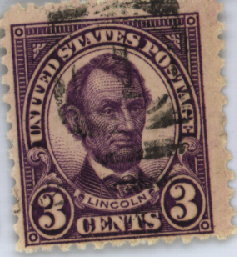FRtR > Outlines > American History (1990) > Chapter Five > The split grows deeper (5/12)
An Outline of American History (1990)
Chapter Five
The split grows deeper (5/12)
< Previous Page * Next Page >
Under the Missouri Compromise, all
this region was closed
to slavery. However, dominant slave-holding elements in
Missouri objected to letting Kansas, which adjoined her on the west,
become a free territory. For Missouri would then have three free
neighbors and, yielding to an already strong movement, would
probably soon be forced to become a free state herself. For a
time, Missourians in Congress, backed by southerners, blocked all
efforts to organize the region.
At this point, Stephen A. Douglas,
senior Senator from
Illinois, stirred up a storm by proposing a bill that enraged all
free-soil men. Douglas argued that since the Compromise of 1850
left Utah and New Mexico free to decide on slavery for themselves,
the Missouri Compromise had long been superseded. His
plan called for two territories, Kansas and Nebraska, and
permitted settlers to carry slaves into them. The inhabitants
themselves were to determine whether they should enter the Union as
free or slave states.
Northerners accused Douglas of currying favor with the
south in order to gain the Presidency in 1856. Angry debates
marked the progress of the bill. The free-soil press violently
denounced it. Northern clergymen assailed it. Businessmen who
had hitherto befriended the south turned suddenly about-face.
Yet, on a May morning, the bill passed the Senate amid the
boom of cannon fired by southern enthusiasts. At the time,
Salmon P. Chase, an antislavery leader,
prophesied:
"They celebrate a present victory, but the echoes they awaken
shall never rest
until slavery itself shall die."
When Douglas subsequently visited
Chicago to speak in his own defense, the ships in the harbor
lowered their flags to half-mast, the church bells tolled for an
hour, and a crowd of 10,000 hooted so that he could not make
himself heard.
The immediate results of Douglas' ill-starred measure were
momentous. The Whig Party, which had straddled the question
of slavery expansion, sank to its death, and in its stead a powerful
new organization arose, the Republican Party,
whose primary
demand was that slavery be excluded from all the territories. In
1856, it nominated for the Presidency
John Frémont, whose five exploring expeditions into the far west
had won him renown.
Although it lost the election, the new party swept a great part of
the north. Such free-soil leaders as Chase and William
Seward
exerted greater influence than ever. Along with them appeared
a tall, lanky Illinois attorney, Abraham Lincoln.
 The flow of both southern slaveholders and antislavery men
into Kansas resulted in armed conflict, and soon the territory
was being called "bleeding Kansas." Other events brought the
nation still closer to upheaval: notably, in 1857, the Supreme
Court's famous decision concerning Dred Scott.
The flow of both southern slaveholders and antislavery men
into Kansas resulted in armed conflict, and soon the territory
was being called "bleeding Kansas." Other events brought the
nation still closer to upheaval: notably, in 1857, the Supreme
Court's famous decision concerning Dred Scott.
Scott was a Missouri slave who, some 20 years before, had
been taken by his master to live in Illinois and Wisconsin,
territory where slavery was forbidden. Returning to Missouri and
becoming discontented with his life there, Scott sued for
liberation on the ground of his residence on free soil. The
southern-dominated Court decided that by voluntarily returning to a slave
state, Scott had lost the right to be free and ruled that any
attempt by Congress to prohibit slavery in the territory was invalid.
The Dred Scott decision stirred fierce excitement
throughout the north. Never before had the Court been so bitterly
condemned. For the southern Democrats, the decision
was a great
victory, since it gave judicial sanction to their justification of
slavery in the territories.
< Previous Page * Next Page >
 The flow of both southern slaveholders and antislavery men
into Kansas resulted in armed conflict, and soon the territory
was being called "bleeding Kansas." Other events brought the
nation still closer to upheaval: notably, in 1857, the Supreme
Court's famous decision concerning Dred Scott.
The flow of both southern slaveholders and antislavery men
into Kansas resulted in armed conflict, and soon the territory
was being called "bleeding Kansas." Other events brought the
nation still closer to upheaval: notably, in 1857, the Supreme
Court's famous decision concerning Dred Scott.